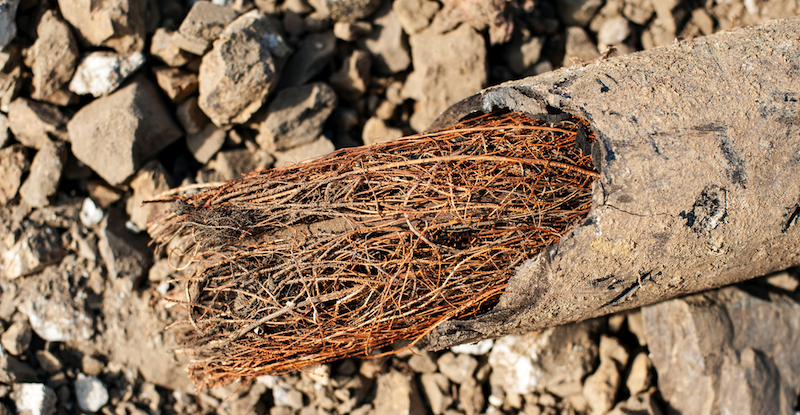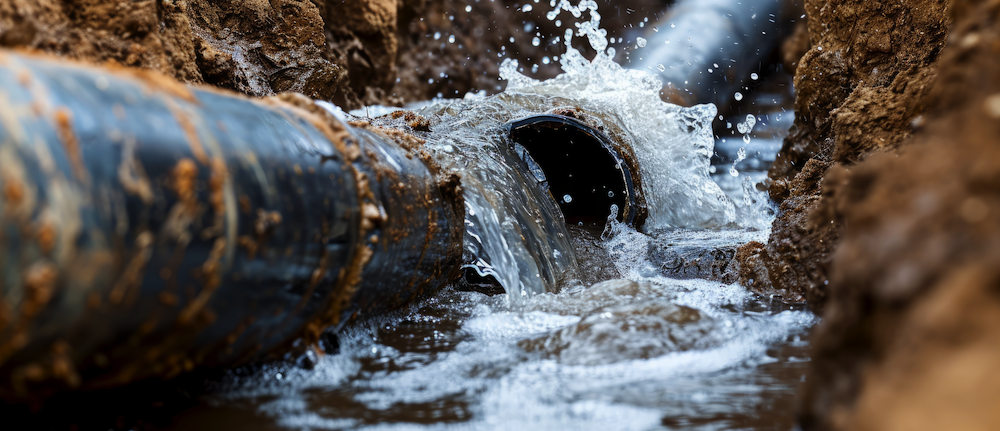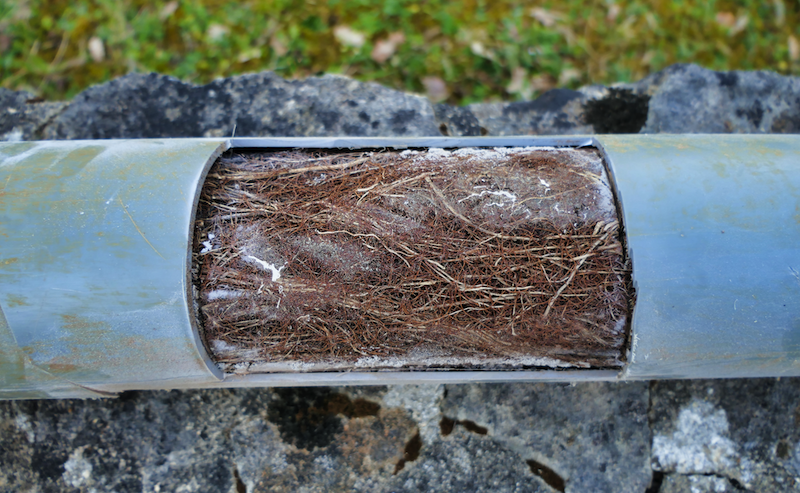Understanding the Hazard of Tree Roots in Plumbing Systems

Discover how tree roots can cause significant and costly plumbing issues. Learn about the hazards, warning signs, and effective prevention and management strategies in our comprehensive guide. Protect your plumbing system from root intrusion with...
Why Tree Roots Are Hazardous for Your Plumbing
1. Tree Roots Seek Water and Nutrients
Trees need water and nutrients to survive, and their roots will naturally grow towards any source of moisture. Plumbing pipes, especially those that are old or have small leaks, can become prime targets for tree roots. The moisture from leaking pipes attracts roots, which then grow around and into the pipes to access the water.
2. Infiltration and Blockages
Once tree roots find their way into your plumbing system, they can cause significant blockages. As roots grow and expand within the pipes, they obstruct the flow of water and waste. This can lead to slow drainage, backups, and eventually complete blockages that prevent your plumbing system from functioning properly.
3. Structural Damage
Tree roots can exert substantial pressure on plumbing pipes as they grow. This pressure can cause pipes to crack, collapse, or become misaligned. Over time, the structural integrity of your plumbing system can be compromised, leading to leaks, bursts, and extensive water damage.
4. Costly Repairs
Repairing damage caused by tree roots can be expensive. Depending on the extent of the damage, repairs may involve replacing sections of pipe, excavating affected areas, and even removing trees. Preventive measures and early detection are key to avoiding these costly repairs.
How do tree roots damage plumbing?
Signs of Tree Root Intrusion
Early detection of tree root intrusion can save you from extensive damage and costly repairs. Here are some signs to look out for:
1. Slow Draining or Clogged Pipes
One of the first signs of tree root intrusion is slow-draining water or frequent clogs. If you notice that sinks, bathtubs, or toilets are draining slower than usual, it could indicate that roots are obstructing the flow of water in your pipes.
2. Gurgling Noises
Unusual gurgling noises coming from your drains can be a sign of tree roots in your plumbing. These noises occur when water struggles to pass through a partially blocked pipe, creating air pockets that produce gurgling sounds.
3. Unpleasant Odors
Tree root intrusions can cause waste to back up in your pipes, leading to foul odors emanating from your drains. If you detect persistent unpleasant smells, it may be due to tree roots obstructing your plumbing system.
4. Water Backups
Water backups in sinks, showers, or toilets are a clear indication of a blockage in your plumbing system. If water is backing up in multiple fixtures simultaneously, it is likely that tree roots are causing the obstruction.
5. Lush, Green Patches in Your Yard
While healthy trees are a beautiful addition to any yard, unusually lush, green patches of grass or vegetation can indicate a leaking pipe. The excess moisture from the leak attracts tree roots, which can then infiltrate the plumbing system.
6. Sinkholes or Depressions in Your Yard
Significant root intrusion can cause soil erosion and create sinkholes or depressions in your yard. If you notice any sudden changes in the landscape, it is important to investigate further, as it may indicate a plumbing issue.
Tree roots in your sewer pipe?
Preventive Measures and Solutions
Preventing tree root intrusion and managing existing issues require a combination of proactive measures and professional intervention. Here are some tips to help you protect your plumbing system from tree roots:
1. Choose the Right Trees and Planting Locations
When landscaping your yard, choose tree species with less aggressive root systems. Avoid planting trees with invasive roots near your plumbing lines. Consulting with a professional landscaper can help you select suitable trees and determine the best planting locations.
Examples of low risk trees:.
-
Japanese Maple (Acer palmatum): Known for its beautiful foliage and non-invasive roots.
-
Crabapple (Malus spp.): Offers attractive flowers and manageable root growth.
-
Citrus Trees (Citrus spp.): These trees are suitable for gardens and have non-invasive root systems.
-
Flowering Dogwood (Cornus florida): A small tree with attractive flowers and less aggressive roots.
-
Australian Frangipani (Hymenosporum flavum): A native tree that provides beautiful blooms and has a less invasive root system.
Examples of Trees to Avoid:
-
Willow (Salix spp.): Highly aggressive root system that seeks out water sources.
-
Poplar (Populus spp.): Fast-growing with invasive roots.
-
Camphor Laurel (Cinnamomum camphora): Known for its extensive root system that can damage pipes.
-
Silver Maple (Acer saccharinum): Roots are known to invade plumbing systems.
-
Ficus (Ficus spp.): Common in gardens but notorious for invasive roots.
2. Install Root Barriers
Root barriers are physical barriers installed between trees and plumbing lines to prevent roots from reaching the pipes. These barriers can be made of metal, plastic, or fabric and are placed vertically in the soil to block root growth. They should be installed at least 30 inches deep and extend several feet on either side of the pipe to be effective.
3. Regular Plumbing Inspections
Regular plumbing inspections by a professional can help detect early signs of root intrusion. A plumber can use cameras to inspect the inside of your pipes and identify any potential issues before they become severe. Annual inspections are recommended, especially if you have older pipes or large trees near your home.
4. Hydro Jetting
Hydro jetting is a method used to clear roots and debris from pipes using high-pressure water. This technique can effectively remove blockages and clean the interior of pipes, restoring proper flow. Regular hydro jetting can help prevent root buildup and maintain the health of your plumbing system.
5. Use Chemical Root Killers
Chemical root killers can be used to kill roots that have infiltrated your plumbing system. These chemicals are typically poured into the drains and work by killing the roots on contact. While this method can be effective, it should be used with caution and under the guidance of a professional to avoid damaging your pipes or the environment.
6. Repair or Replace Damaged Pipes
If tree roots have caused significant damage to your plumbing system, it may be necessary to repair or replace the affected pipes. Modern materials like PVC or HDPE are more resistant to root intrusion and can provide a longer-lasting solution. Trenchless repair methods, such as pipe relining or pipe bursting, can also be used to minimise disruption to your property.
7. Professional Root Removal
In cases of severe root intrusion, professional root removal may be required. A licensed plumber can assess the extent of the damage and use specialised equipment to remove the roots without causing further harm to your plumbing system. This process may involve using mechanical augers, high-pressure water jets, or chemical treatments to clear the roots.
The Impact of Tree Root Intrusion on Different Types of Pipes
Different types of plumbing pipes react differently to tree root intrusion. Understanding these differences can help in selecting the right materials and preventative measures.
Clay Pipes
Clay pipes, commonly used in older homes, are highly susceptible to tree root intrusion. Their porous nature and susceptibility to cracking make them prime targets for roots seeking moisture.
Cast Iron Pipes
Cast iron pipes are more durable than clay pipes but can still be penetrated by aggressive tree roots. Over time, cast iron can corrode, creating weak points that roots can exploit.
PVC and HDPE Pipes
PVC (polyvinyl chloride) and HDPE (high-density polyethylene) pipes are more resistant to tree root intrusion. Their smooth surfaces and strong joints make it harder for roots to penetrate. However, they are not immune, and proper installation and maintenance are still essential.
Concrete Pipes
Concrete pipes are durable and can withstand significant pressure, but they can crack over time. Tree roots can exploit these cracks, leading to blockages and damage. Reinforced concrete pipes offer better resistance but are still vulnerable.
How Climate and Soil Conditions Affect Tree Root Intrusion
Climate and soil conditions play a significant role in the likelihood of tree root intrusion.
Climate
In regions with high rainfall and temperate climates, tree roots may not need to search far for moisture, reducing the risk of intrusion. Conversely, in arid regions, trees will aggressively seek out water sources, increasing the likelihood of roots infiltrating plumbing systems.
Soil Conditions
Soil type and composition affect root growth and behaviour. Clay soils, which retain moisture, can attract tree roots more than sandy or loamy soils. Compacted soils can also force roots to grow closer to the surface, increasing the risk of intrusion into shallow pipes.
The Role of Professional Plumbing Services
Professional plumbing services are crucial in managing and preventing tree root intrusion. Regular inspections, prompt repairs, and professional root removal can save homeowners from extensive damage and costly repairs.
Importance of Regular Inspections
Annual plumbing inspections can identify potential issues before they become severe. Plumbers can use advanced diagnostic tools, such as video cameras, to inspect the interior of pipes and detect early signs of root intrusion.
Timely Repairs
Promptly addressing minor issues can prevent major damage. Small cracks or leaks can be repaired before roots have a chance to infiltrate and cause significant blockages.
Expert Advice
Professional plumbers can provide expert advice on preventive measures, such as the best trees to plant, where to install root barriers, and how to maintain the health of your plumbing system.
Tree roots can pose a significant hazard to your plumbing system, causing blockages, structural damage, and costly repairs. By understanding the signs of root intrusion and taking proactive measures, you can protect your plumbing system and ensure its longevity.
Whether you are a professional plumber or a homeowner, following these preventative measures and solutions can help you maintain a healthy and efficient plumbing system. Protect your plumbing system from tree roots and enjoy peace of mind knowing that your home is safeguarded against this common but manageable problem. Regular maintenance, professional inspections, and appropriate landscaping choices are key to preventing and managing tree root intrusion effectively.
Join the Plumber's Root Challenge and Win!
Plumbers, we know you’ve got tales of triumph over the gnarliest, most stubborn tree roots. We see plumber's showcasing their tree root pulling skills all the time on socials and love it. We want to reward you for all your tree root pulling efforts as our industry is based on the hardworking plumbers like you! Tag us @austworld and hashtag #AWRootChallenge we will send you a t'shirt for free, the longest tree root of the month will also get something special from us.
HOW TO PARTICIPATE
1️⃣ Snap a photo or video of the biggest, baddest tree root you’ve encountered on the job.
2️⃣ Post it on your social media with the hashtag #AWRootChallenge and tag @austworld
Ready to be crowned the ultimate Root Wrangler? Enter as many times as you like. Let the challenge begin!


















